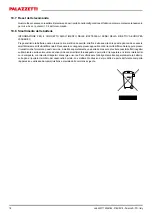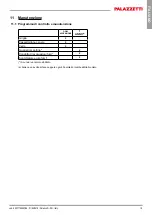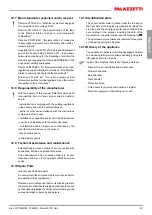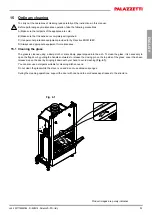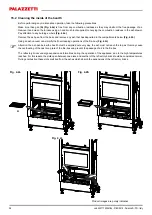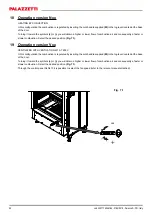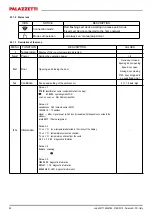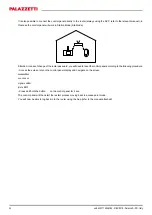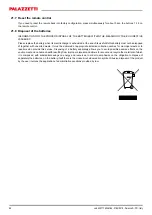
it is necessary to heat well the flue system, by correctly
performing the ignition according to the procedure
described in paragraph 5.2.
Do not observe directly and for long time the flame in order
to avoid the occurrence of possible eyes pathologies.
13 Safety warning
13.1 Warnings for the user
Prepare the location where the appliance will be
installed according to the of local, national and European
regulations.
The appliance, being a heating product, has particularly
hot external surfaces. For this reason we recommend the
utmost caution during operation; in particular:
- do not touch and do not approach the glass of the door,
it could cause burns;
- do not touch any part of the chimney;
- do not perform any type of cleaning;
- do not remove the ashes;
- keep children out of reach.
Observe the prescriptions contained in this manual.
Observe the instructions and warnings highlighted by the
plates on the product.
The tags are safety devices, therefore they must
always be perfectly legible. If these are damaged and
unreadable, it is mandatory to replace them, requesting
the original spare parts from the manufacturer.
Use only the fuel complying with the indications given on
the chapter relating to the fuel characteristics.
Carefully follow the routine and extraordinary maintenance
program of the fireplace and of the installation.
Do not use the appliance in case of abnormal operation,
suspicion of breakage or unusual noises.
When cleaning do not lean on the open door: it could
cause the breaking of the door itself and/or compromise
the stability of the appliance.
Do not use the appliance as a support or anchoring of
any type.
Do not clean the appliance until the structure and the
ashes are completely cooled down.
Perform all operations in maximum safety and calm.
In the event of a blaze in the fireplace, attempt to
extinguish the blaze in the fireplace by closing all the
primary air required for combustion and subsequently
stifling the flame, closing the combustion air through the
combustion air register. Immediately call the emergency
services.
Do not use the appliance as a waste incinerator and use
only the fuel recommended.
In the event of malfunction of the appliance due to a
not optimal forced draught of the flue, clean the same
according to the procedure described in paragraph 6
using qualified personnel.
The cleaning of the flue system must still be carried out
at least once a year.
A not optimal draft in the flue system can also be caused
by particularly adverse weather conditions (typically
low pressure or particularly windy areas): in this case
14 Fuel characteristics
The appliance should preferably be fuelled with well
seasoned beech/birch wood. Each type of wood has
different characteristics that also affect the combustion
efficiency.
The use of conifers (pine-fir) is discouraged: they contain
high quantities of resinous substances that quickly clog
the flue.
It is prohibited to burn: waste, bark, wood treated with
paints, panels, coal, plastic materials; in these cases the
warranty of the appliance is voided.
Important: continuous and prolonged use of wood
particularly rich of aromatic oils (e.g. eucalyptus, myrtle,
etc.) causes the sudden deterioration of the internal
components of the product.
The nominal yield declared in kW of the stove, is obtained
by burning a correct quantity of wood, being careful not
to overload the combustion chamber.
The wood must have a recommended percentage of
humidity of 25%, an ideal length of about 33 cm and
must be placed in a horizontal position being careful not
to completely block the slots of the firebox grid.
The reference standard for the fuel is UNI/ISO 17225-1
"wood logs of forest origin".
24
cod. 004777530 MBL - 21/03/2019 - Palazzetti - PN - Italy









